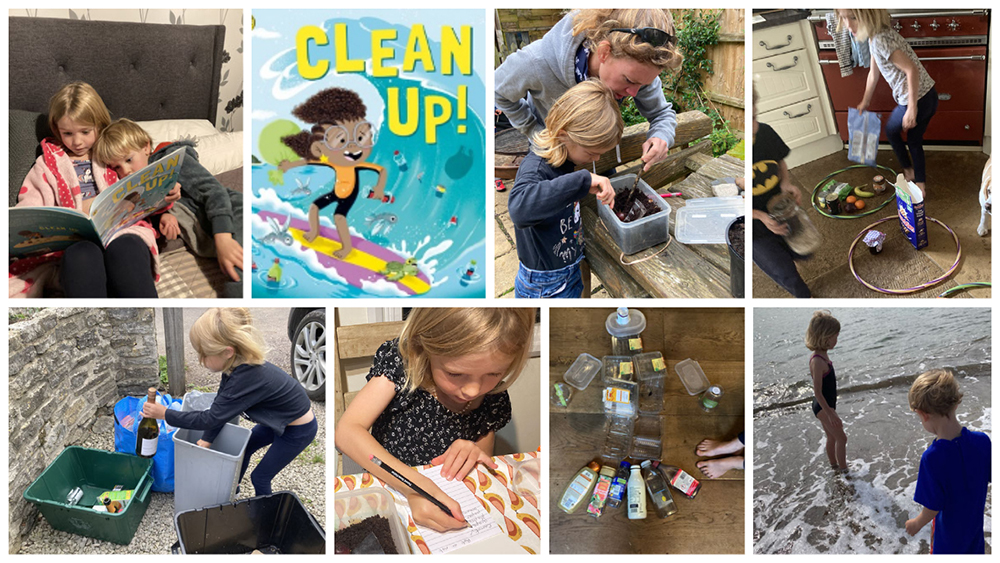 Nathan Bryon, illus. Dapo Adeola
Nathan Bryon, illus. Dapo Adeola
Puffin Books
Age 5-7
Rocket is really excited; she is going to visit Grammy and Grampy who live in Jamaica. They run whale watching tours, own a wildlife sanctuary AND Grammy is brilliant at surfing! While there, Rocket is shocked by the amount of rubbish on the beach and how it is affecting the wildlife. She decides to do something about it.
This is a delightfully illustrated story with a determined main character who sets out to make a difference. This is a story to raise awareness of the threat of plastic pollution on our oceans and ocean creatures and encourage small scale activism.
Share the story
Read aloud
Before reading the story, you might like to look at the cover together and talk about what the story might be about. If children already know ‘Look Up!’ by the same team they might remember Rocket and her family.
Read the story aloud pausing to talk about what is happening in the story or pictures when your child wants to.
Join in
When they are familiar with the story children could join in for example with all the things Rocket is looking forward to doing in Jamaica, conversation with Grampy and the ‘Did you know’ page.
Talk about the story
-
Rocket is very excited – talk together about times when you have been excited about going on holiday or on a trip. What would you pack if you were going away on holiday?
-
Look at the page where Rocket imagines what she would do in Jamaica – share thoughts on which things you would like to do – eg surf the waves or dance with a dolphin? Fist bump a turtle or high five an octopus?
-
Have you been to the seaside? What do you remember? What do you like best about being near the ocean?
-
If you child has grandparents talk about where they live, are they near or far away? Do you know anyone who lives in Jamaica? What do you know about it?
-
Did anything surprise you about the story and is there anything you want to find out more about?
-
Which is your favourite page?
Things to make and do
Make a ‘Did you know’ book
Find out more about plastic pollution in the ocean using the information in the book and other information you find (see links below). Make a zig zag book and start each page with ‘Did you know … then write your fact with an illustration.
Make a sculpture
In the story an artist makes a sculpture from plastic waste found on the beach. Children could save some plastic containers and make a sculpture from it perhaps shaped like a sea creature like the one in the story. This link might give you some ideas.
Make a poster
Make a poster to go in the park or at the beach to encourage people to take their rubbish home and keep the beach or park clean. you need paper A4 or larger thick pens or crayons. A ‘slogan’ a clear message – practice on scrap paper and an image.
Be a plastic detective
Looking at the shopping as it is unpacked and the products in your cupboards, to see how much plastic is used. Is it all necessary? Could your family buy shopping with less plastic packaging? Let your child help you sort your rubbish for recycling, maybe setting up different bins for different material.
Do a science experiment
Experiment to find out how long different materials take to decompose. In a container, such as an old fish tank, or washing up bowl place a layer of soil. Choose items together to see if they decompose eg a banana skin, newspaper, cardboard box and a plastic container. Cover with another layer of soil and dampen with a drop of water. Churn over every 4 or 5 days with a metal spoon. Check after two weeks to see if any of the objects have started to decompose by raking through the soil or tipping onto newspaper. You may prefer to wear protective gloves for this. Talk about what you find with your child and what this means to the environment. Find out about how long it takes for plastic to break down – see links below.
Find out more



 Follow lovemybooksUK15
Follow lovemybooksUK15